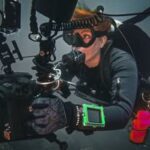Last Updated on April 12, 2024 by Candice Landau
Because I’m obsessed with diving in every way, shape and form, and because I once had romantic notions of being a globe-hopping archaeologist, heading north to meet with the crew from the Maritime Archaeological Society was a no-brainer.
Headquartered in Astoria, Oregon (yes, that is where they filmed the Goonies), MAS is a registered nonprofit, and an active group of archaeologists, shipwreck hunters, scuba divers and maritime aficionados.
Their mission?
Find and loot ships.
No, I am joking. They are as far from looters and salvagers as you could come. In fact, as I learned, they take great care not to salvage. Their goal is to seek out, investigate and document shipwrecks and other maritime archaeological sites; to conserve artifacts from those sites, where possible and when appropriate; to at least survey and document them when preservation is not possible or financially viable; and to educate the public in matters concerning maritime cultural heritage, historic shipwreck preservation, and the science of maritime archaeology.
If you are interested, you can find out more about them on their website.
Before I attended their annual meeting in February, I had only a cursory understanding of maritime archaeology. I did take a number of archaeology classes in undergrad, but never studied much more than sea-faring vessels built by the Inuits. Come to think about it, I never learned a single thing about maritime archaeology, or underwater archaeology!
While I am certainly interested in archaeology, the real draw for me was the pool training for underwater surveying. And of course the idea of getting to survey shipwrecks underwater. However, before I was eligible to take this more advanced class, I had to take their basic training course, which incidentally, was offered this weekend for a small fee–the price of membership, just $30. Once I’d taken this course I could move on to the pool session, and also on to more advanced classes.
Their basic training included a number of modules, alongside a practical survey class:
- Basic archaeology introduction
- Shipwreck archaeology
- Archaeological laws and regulations
- Historical research techniques
- Safety
- Navigation and grid setup
- Ship construction
- Archaeology recording and underwater survey methods
- Photography and geographical information systems
As I’m more of a hands-on learner, my favorite part of the course was the practical section on surveying. Below you can see a photo of us practicing the Baseline Offset method. First we established a baselines alongside our imaginary wreck, then we measured the distance from the baseline to the various points on the record, recording each measurement. Were we undertaking a real-life survey, we would then have had to plot this out on graph paper and draw as accurate as possible likeness of the wreck.

Honestly, it was just a really fun weekend. I can’t wait for the next course and to actually help with some underwater surveying, when and if that happens!

















